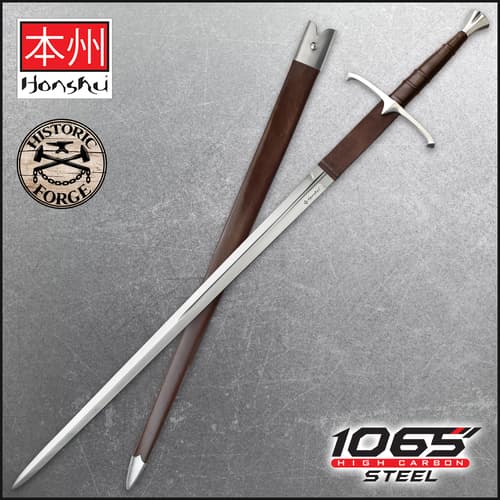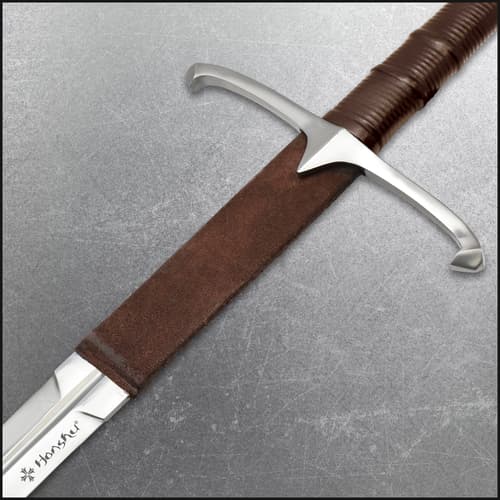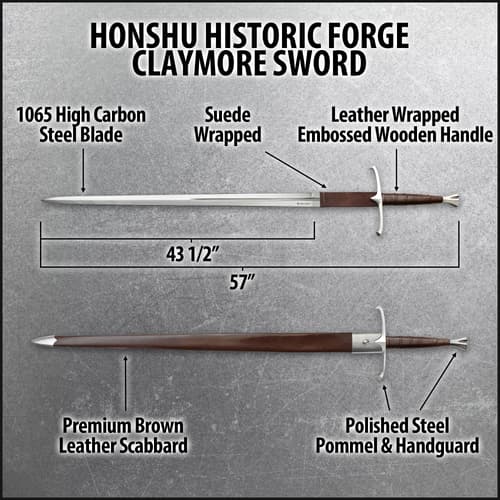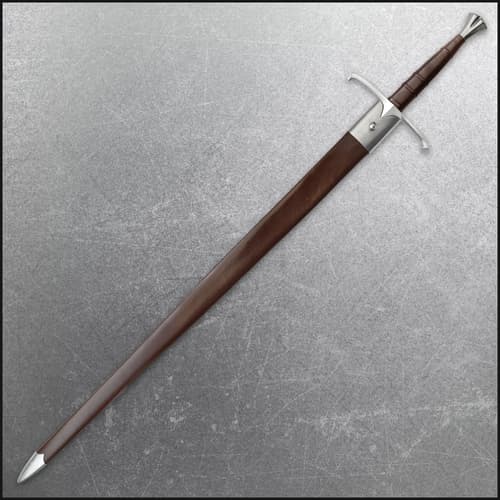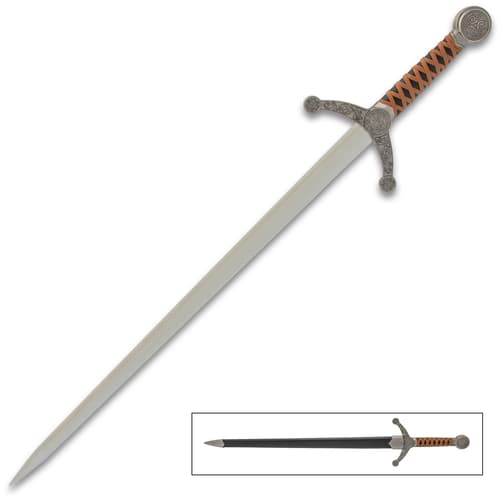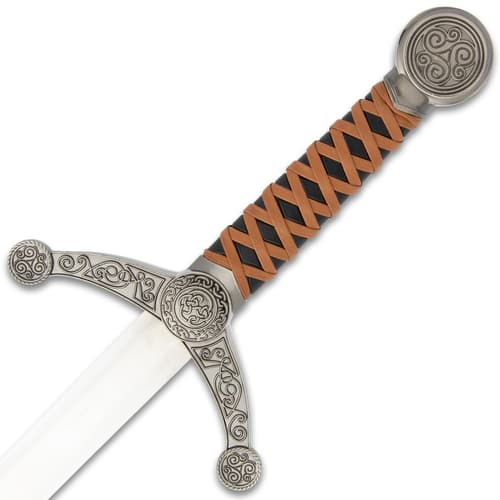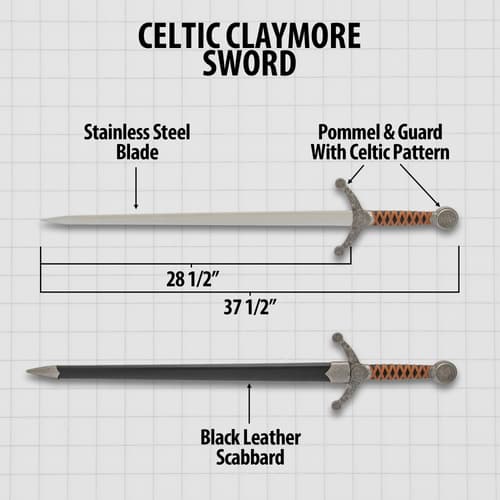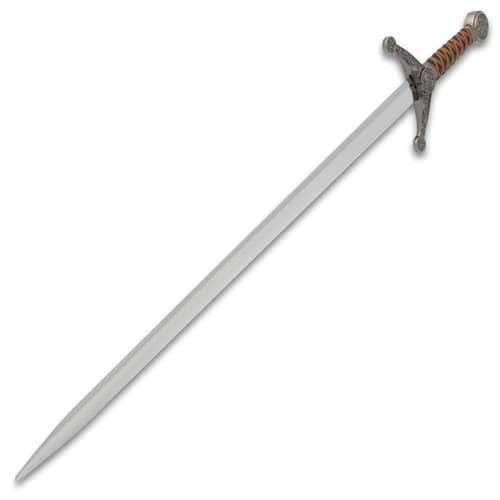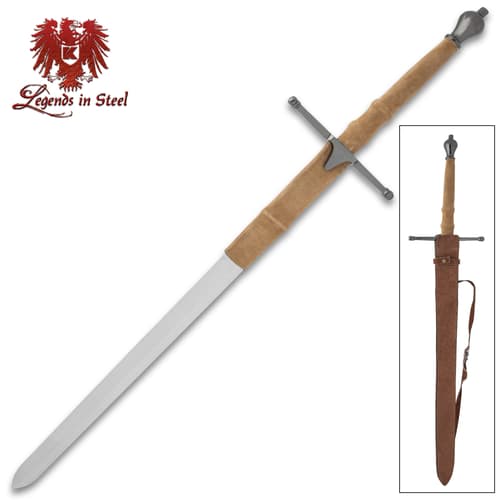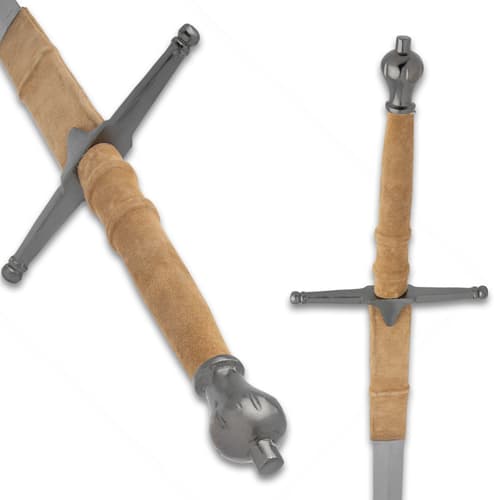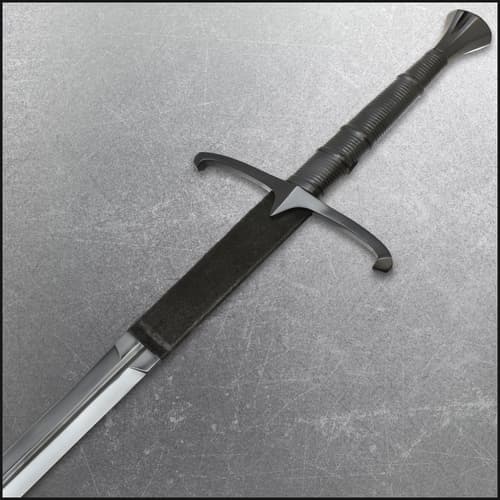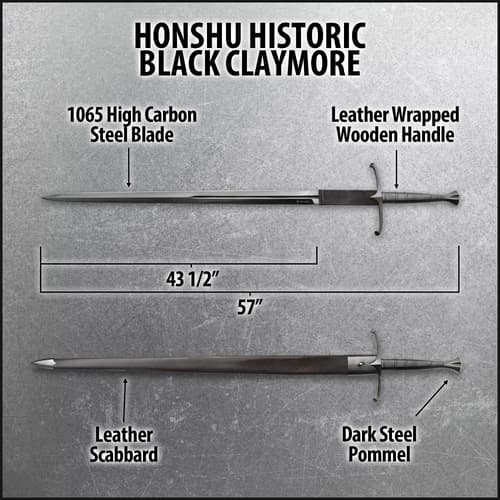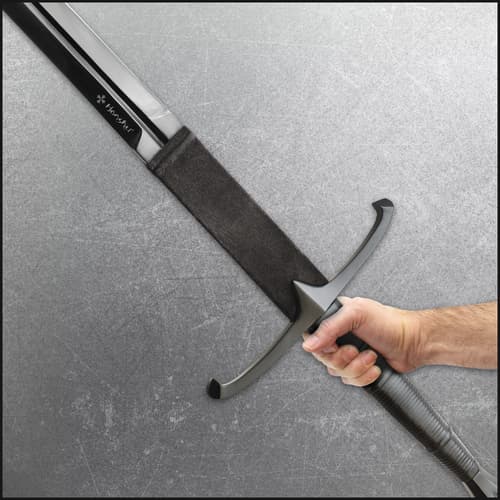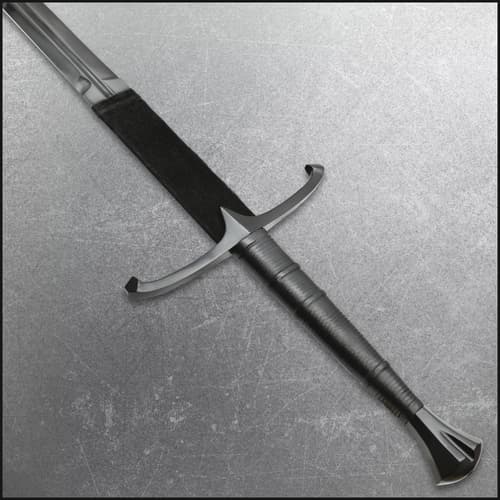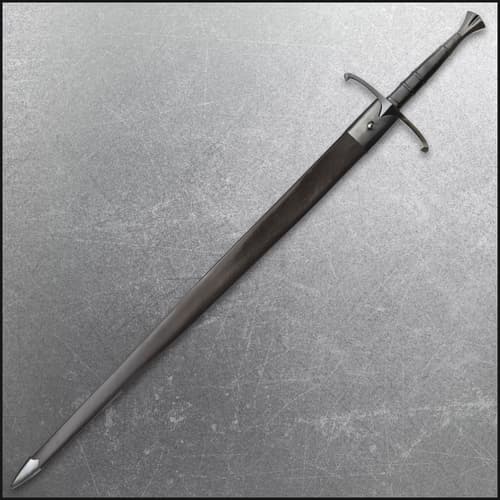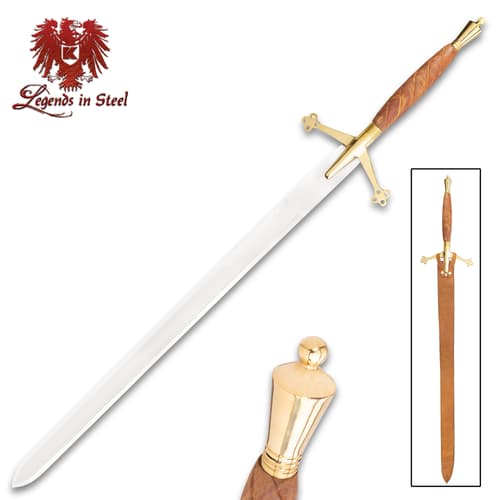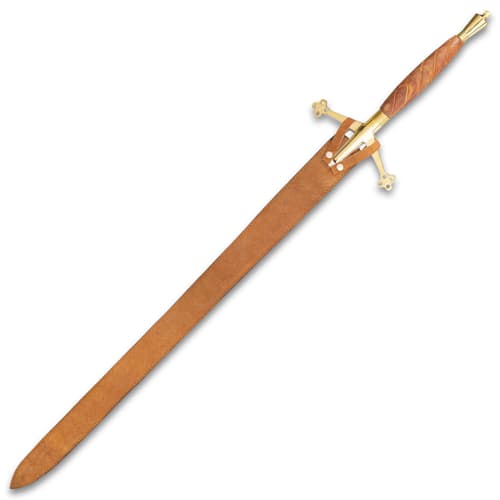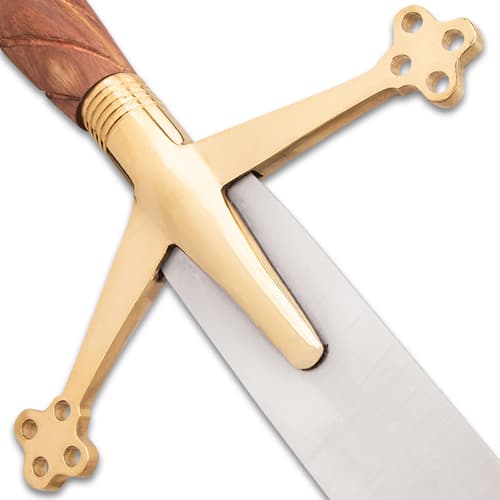Claymore Swords
5 Results
50233
Honshu Historic Forge Claymore Sword
USD
1
Honshu
Swords
Historical Swords
Claymore Swords
CL3
Category L3
349.99
$59.99
6066
William Wallace Long Two Handed Sword
USD
3
Legends in Steel
Swords
Historical Swords
Medieval Swords
CL3
Category L3
54.99
50520
Honshu Historic Black Claymore Sword and Scabbard - 1065 high carbon steel
USD
4
Honshu
Swords
Historical Swords
Claymore Swords
CL3
Category L3
349.99
6072
Legends In Steel Scottish Early Pattern Claymore Sword
USD
5
Legends in Steel
Swords
Historical Swords
Claymore Swords
CL3
Category L3
49.99
CLAYMORE SWORD FAQS
- What is a Claymore Sword?
A Claymore is a large two-handed sword traditionally used by Scottish Highlanders during the late medieval period. Claymore swords take their name from Scottish Gaelic “claidheamh mòr,” which means “great sword.” Typically, claymore swords had a long, double edged blade and forward sloping crossguards. Some examples were decorated with quatrefoils at the ends of the quillions; this is a feature you can see in some of our reproduction Scottish swords. Known for its size and long reach, the Claymore was designed for powerful swings in battle and is a symbol of Scottish strength and heritage. - What materials are used to make Claymore Swords?
TrueSwords.com Claymore Swords are typically made with high-carbon steel or stainless steel blades for durability and sharpness. The handles, crossguards, and pommels are often crafted from materials like wood, leather, or metal for authenticity and comfort. - Can Claymore Swords be used for reenactments or combat?
Yes, many of our Claymore Swords are designed for use in reenactments, stage combat, or demonstrations. Always check the product description to ensure the sword is built for functional use and can withstand the rigors of combat. - Are battle-ready versions real claymore swords?
If a claymore sword is listed as “battle-ready,” that means it is made with a suitable steel alloy that is tempered to enable it to stand up to live use, and is made with a full, or nearly full tang. Battle-ready claymores can be used for cutting and training. - Are there other types of Scottish swords known as claymores?
Yes, there is another style of claymore known as a “basket-hilted claymore,” sometimes also referred to as a Scottish basket-hilted broadsword, because it had a wide, flat blade and two edges. These “basket-hiled” claymores were lighter than true claymores and are easily recognizable by the steel or brass basket hilt that fully encloses and protects a wielder’s hands. - What maintenance is required for a Claymore Sword?
Regular maintenance is important for preserving your Claymore Sword. Clean the blade after use, apply a light coat of oil to prevent rust, and sharpen the blade as needed. Store the sword in a dry place, preferably in its scabbard or a display case.

